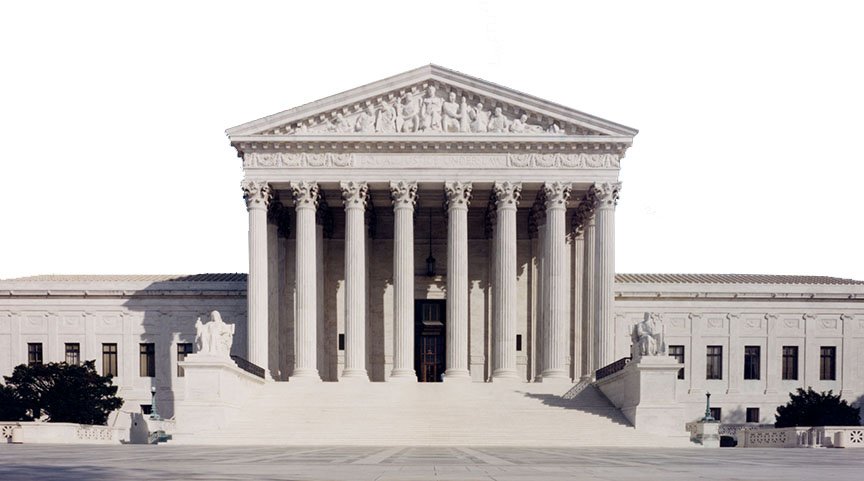A History of Defiance
by Jack R. Johnson 09.2023
“Texas will see you in court, Mr. President,” snapped Governor Greg Abbott of Texas in July of this year. He was making clear that he would not comply with a justice department request to remove floating barriers in the Rio Grande. And Abbott is not the only Republican governor in open revolt against the Court’s decisions. In May, Governor Ron DeSantis of Florida signed a bill allowing the death penalty in child rape convictions despite the Supreme Court banning capital punishment in such cases. Earlier in July, Governor Kay Ivey of Alabama signed into law a redistricting map that ignored a Supreme Court ruling ordering the state to draw two Black-majority congressional districts.
That Supreme Court decision was especially unexpected because in striking down a substantial part of the Voting Rights Act in his 2013 ruling, Chief Justice Roberts argued that “things have changed dramatically” in the South, and so the Voting Right Act protections could be disregarded. That was naive at best, as Alabama has helpfully demonstrated.
A little history might have clarified Robert’s view of things. After all, it’s not first time the state of Alabama defied a Supreme Court ruling. Former Alabama Governor George Wallace made the cover of Time magazine by declaring “segregation now, segregation tomorrow, segregation forever” in his inaugural address as Governor. He proved to be a man of his word, later defying the federal courts in 1963 when he stood in front of the University of Alabama, flanked by state troopers, and literally blocked the door of the enrollment office.
He got away with that because-- interesting fact --the Supreme Court doesn’t have an enforcement arm. In fact, it’s up to either the executive branch or the legislative branch to enforce the court’s ruling. So on June 10, 1963, President John F. Kennedy did exactly that. He federalized National Guard troops and deployed them to the University of Alabama to force desegregation. The next day, Governor Wallace yielded to the federal pressure, and the two Black students, Malone and Hood were able to complete their enrollments. In September of the same year, Wallace again attempted to block the desegregation of an Alabama public school—this time Tuskegee High School—but President Kennedy once again employed his executive authority and federalized National Guard troops. Wallace had little choice but to yield. Note again, it was the executive branch which operated as the enforcement arm for the Supreme Court decision. The judiciary alone was impotent.
Those familiar with the history of the high court might remember President Andrew Jackson’s response to the court’s decision in Worcester v. Georgia, one of the foundational rulings enforcing tribal sovereignty in the United States. “[Justice] John Marshall has made his decision, now let him enforce it.”
President Jackson did not agree with the Worcester v. Georgia decision, which involved a group of white Christian missionaries, including Samuel A. Worcester, who were living in Cherokee territory in Georgia, advising the Cherokee about resisting Georgia’s attempts to impose state laws on the sovereign Cherokee Nation. Georgia state authorities arrested Worcester and several other missionaries and they were convicted at trial in 1831 and sentenced to four years of hard labor in prison. Worcester appealed to the U.S. Supreme Court, arguing that Georgia had no right to extend its laws to Cherokee territory and contended that the act under which he had been convicted violated the U.S. Constitution, which gives to the U.S. Congress the authority to regulate commerce with Native Americans.
The Supreme Court agreed with Worcester, ruling 5 to 1 on March 3, 1832, that all the Georgia laws regarding the Cherokee Nation were unconstitutional and thus void.
Georgia, however, ignored the decision, keeping Worcester and the other missionaries in prison. President Andrew Jackson also declined to enforce the Supreme Court’s decision, thus allowing states to enact further legislation damaging to the tribes. In fact, in an act of stark defiance, Georgia held a lottery that allocated parcels of the Indian reservation to ‘qualifying’ local white settlers. Later, after Jackson signed his Indian Removal Act, the U.S. government began forcing the Cherokee off their land in 1838. In what became known as the Trail of Tears, some 15,000 Cherokee were driven from their lands and were marched westward on a grueling journey. Four thousand died in route. All of this was a direct outcome of Jackson allowing Georgia to defy a Supreme Court decision with impunity.
Of course, the largest example of state’s openly defying the Court and Federal law came about 30 years later when southern states believed that they had the right to nullify federal laws and secede from the Union if their slave holdings were threatened. It took four years of civil war to correct that error.
As Daniel Ziblatt, a political scientist at Harvard University, noted: “The major breakthroughs in American democracy have come when the federal government has either passed national legislation – think of the Civil Rights Act or the Voting Rights Act – or had to intervene.”
“Major moments of backsliding have happened when the federal government turns a blind eye to what’s happening in the states…. So in a way the confrontation between the states and the federal government is a confrontation over democracy.”
For the ‘law and order’ party, it’s worth remembering that in Alabama today, in Texas, and in Florida, the GOP is openly defying the court’s rulings again, just as the South did in fomenting our bloodiest war over 150 years ago.

